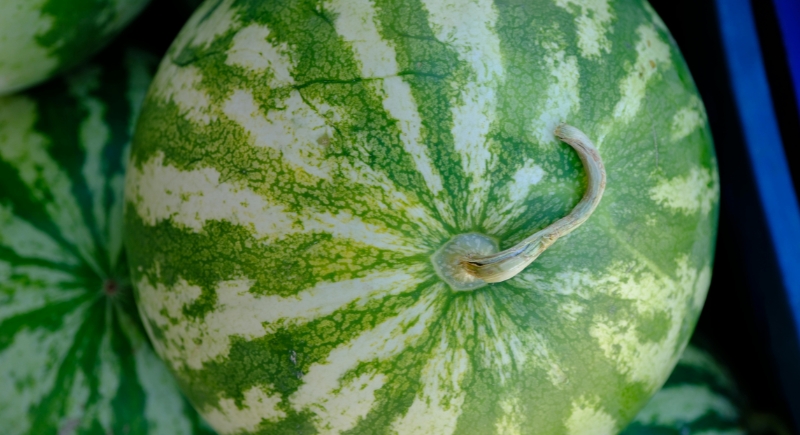Easy 2-Finger Trick for Picking a Perfectly Sweet Watermelon
A watermelon can look flawless on the outside and still be disappointing once sliced. Qualities like a smooth rind, bright color, or hefty weight don’t guarantee sweetness. However, you can use the two-finger trick right at the store. It doesn’t rely on sound or smell, nor does it require background knowledge of produce.
This technique comes from farmers and has gained support across social media and grocery pros alike.
How to Use the Two-Finger Watermelon Rule
Place your index and middle fingers together and hold them up to the rind. Focus on the space between two dark green stripes. If the green area between those pale lines matches the width between your two fingers, then the melon is more likely to be ripe and sweet. This test is a visual cue grounded in how the fruit grows. When watermelons ripen naturally on the vine, the stripes stretch and spread apart. Melons with narrower stripe gaps often haven’t reached their full potential.
Once picked, a watermelon will not continue to mature, so that small difference makes a noticeable impact. This method gained attention after a viral Facebook post credited the tip to a farmer. It then circulated on TikTok, where videos demonstrating it have reached over 28 million views.
Why Stripe Spacing Signals Ripeness
Wider spacing between the dark green stripes develops as the watermelon matures on the vine. This happens naturally as the fruit expands and matures. When the gap between the stripes reaches the width of two fingers, the fruit has likely developed enough internal sugar to deliver that sweet flavor most people expect.
Meanwhile, a narrow gap often means the watermelon was harvested early, before sugars had time to concentrate. Unlike some fruits, watermelons do not ripen after they are picked. If they leave the field too soon, there is no way to recover the taste. This is why spacing makes such a difference.
Grocery staff and food editors who’ve tested the rule have reported that melons matching the two-finger spacing tasted better and had a firmer texture. In contrast, those with smaller gaps were often watery or bland. This makes stripe spacing not just a helpful tip, but a practical way to avoid poor-quality fruit.
Other Signs to Confirm a Ripe Watermelon

Image via Pexels/Doğan Alpaslan Demir
Besides the two-finger check, a few other visible signs can support your choice. The field spot—an area on the rind that rested on the ground—should be a buttery yellow color. That patch shows how long the fruit stayed in one place to mature. A white or pale yellow field spot suggests less time on the vine, which can mean less flavor.
Dull skin is another indicator. A shiny rind often reflects an immature watermelon. So, look for a matte surface instead. The stem should appear dry and brownish, not green or fresh. That dryness shows that the melon detached naturally rather than being cut off early. Some people still knock on the rind and listen for a hollow sound, which can help, but visual cues are more reliable. Each of these signs tells part of the melon’s growth story and helps build a clearer picture of what’s inside before you slice it.